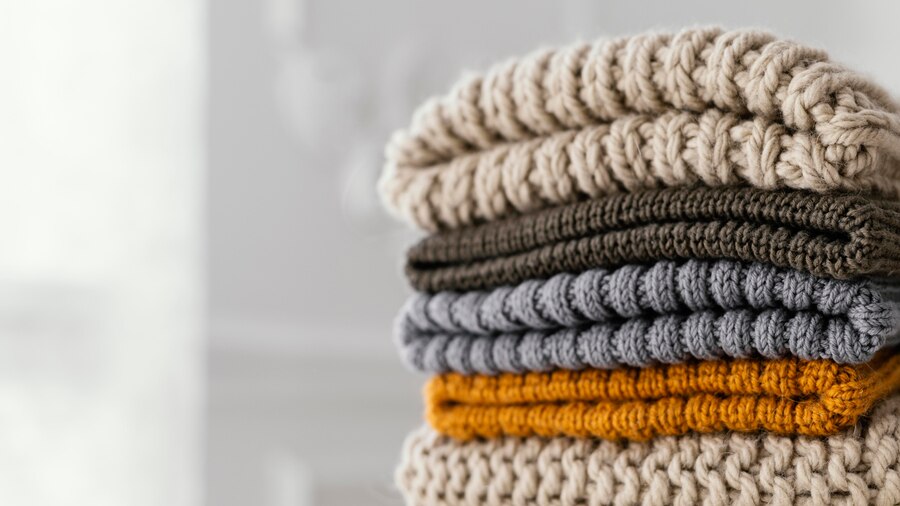
Knitted garments, whether made from premium knitting wool or high-quality knitting yarns, require special care to maintain their beauty and longevity. Proper maintenance ensures that your handmade pieces remain soft, vibrant, and durable for years to come. In this guide, we provide essential tips for caring for your knitted garments, focusing on the unique needs of wool and other yarns.
Gentle Washing Techniques
Hand Washing: The Preferred Method
Hand washing is the safest way to clean your knitted garments, particularly those made from delicate knitting wool or yarns. Fill a basin with lukewarm water and add a small amount of mild detergent or wool-specific cleaner. Gently submerge the garment and swirl it around, taking care not to agitate the fibers too much. Rinse thoroughly with cool water to remove all detergent.
Machine Washing: For Superwash Wool and Sturdy Yarns
If your garment is made from superwash wool or a durable yarn that can withstand machine washing, use a gentle cycle with cold water. Place the garment in a mesh laundry bag to protect it from stretching or snagging during the wash. Use a mild detergent, and avoid fabric softeners, which can coat the fibers and reduce their breathability.
Drying and Blocking
Air Drying: Preserve Shape and Softness
Avoid using a tumble dryer for knitted garments, as the heat can cause shrinkage and damage the fibers. Instead, lay the garment flat on a clean towel, reshaping it to its original dimensions. Press gently with another towel to remove excess moisture, then leave it to air dry away from direct sunlight, which can cause fading.
Blocking: Essential for Maintaining Shape
Blocking is a crucial step in the care of knitted garments, particularly after washing. To block, lay the damp garment on a flat surface and use rust-proof pins to secure the edges in place, ensuring the garment dries in its correct shape. For items made from finer knitting yarns, consider using a blocking board or mat with measurements to achieve precise sizing.
Storing Your Knitted Garments
Fold, Don’t Hang
To avoid stretching, always fold your knitted garments rather than hanging them. Hanging can cause the fibers to stretch and lose their shape, particularly for heavier items like sweaters and cardigans. Store the folded garments in a drawer or on a shelf in a cool, dry place.
Protect from Moths and Pests
Wool and natural fibers can attract moths and other pests. To protect your knitted items, store them with cedar blocks or lavender sachets, which naturally repel moths. Ensure that your storage area is clean and free from dust, which can harbor pests.
Repairing and Maintaining Knitted Garments
Mending Holes and Snags
Despite your best efforts, knitted garments may develop holes or snags over time. Use a darning needle and matching yarn to repair small holes before they become larger. For snags, gently pull the loose thread through to the inside of the garment and secure it with a knot.
Removing Pilling
Pilling occurs when fibers rub together and form small balls on the surface of the garment. To remove pilling, use a fabric shaver or a fine-toothed comb, working gently to avoid damaging the underlying fibers. Regular maintenance can keep your knitted garments looking fresh and new.
Conclusion
Caring for your knitted garments, whether crafted from knitting wool or other premium knitting yarns in Australia , is essential to preserving their quality and longevity. By following these tips, you can ensure that your handmade pieces remain soft, vibrant, and beautiful for years to come. With the right care, your knitted creations will continue to bring warmth and comfort to you and your loved ones, season after season.